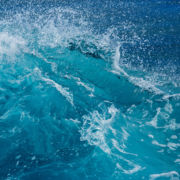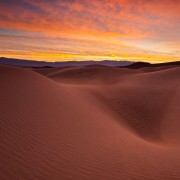White Balance in Landscape Photography Simplified
Setting an ideal white balance in landscape photography doesn’t have to be a complicated task, especially with the user-friendly software and cameras available today. The following is my quick and simple approach for dealing with the white balance within my own images.
Step #1: Get it Right in Camera
The first step is getting the white balance close in-camera. On my Canon, the auto white balance setting works the best and gets me closest to the ideal. With this setting, my camera adjusts the images’ white balance whenever the light changes. Because of this, I don’t have to constantly make manual adjustments to my landscape photos.
This landscape photography workflow may not work for everyone and it depends on your equipment and your personal preference. However it’s been working well for me for many years.
Step #2: Get it Right in Lightroom
The next step occurs after the landscape photo has been imported into Lightroom. One of the first things I do to an image in Lightroom is address the overall white balance. There are a couple of basic concepts that I keep in mind. For daylight landscape photography I usually want a fairly neutral white balance. Take a look at the following landscape photo:
If I click on an area where all of the RGB percentage values are close to 50%, I neutralize any color cast within the image. I usually don’t want much of a color cast in these types of images so this is a Lightroom adjustment that I often make. My camera usually does a good job of setting a decent white balance under these circumstances so I don’t need to tweak the settings too much.
However this approach does not work for landscape photography during golden hours. For photos shot during sunset or sunrise, I almost never want to neutralize the white balance. As an example, look at the following image shot during a sunset.
The pink clouds overhead were casting beautiful pink light on the scene. Because of this, I don’t want to neutralize the white balance. If I click on a place in the image where all of the RGB values are close to 50%, this is what it would look like:
The image has lost that beautiful pink glow and now appears flat and a bit lifeless. In this case, I would leave the white balance “as shot” and make some minor tweaks to the blue/yellow and green/magenta slider to fine-tune things and get them exactly where I want them.
That is pretty much all there is to it. I find that I can work faster not having to constantly tweak the settings in my camera while shooting and the “auto white balance” setting does a very good job of giving me a great starting point for landscape photography. I hope this article helps simplify things for you and gives you some new tools and ideas to apply to your own shooting process in the field and in the digital darkroom.













